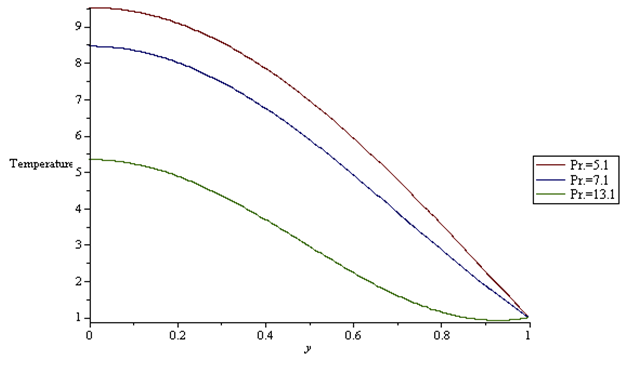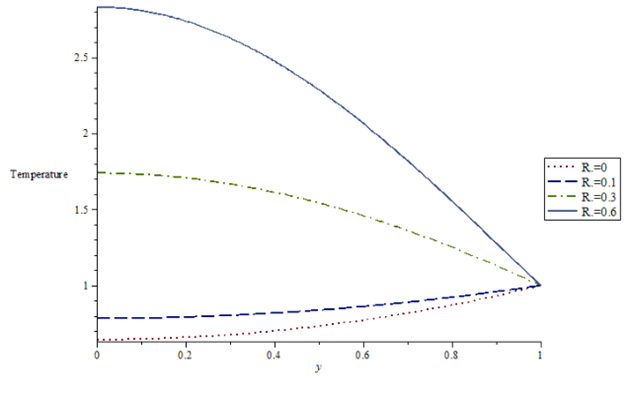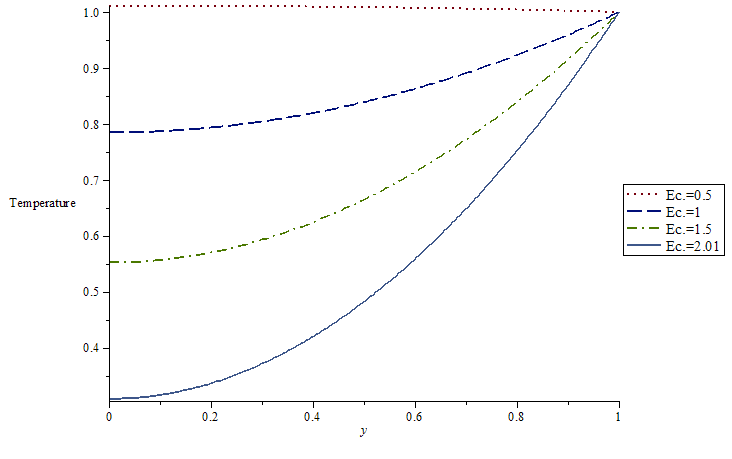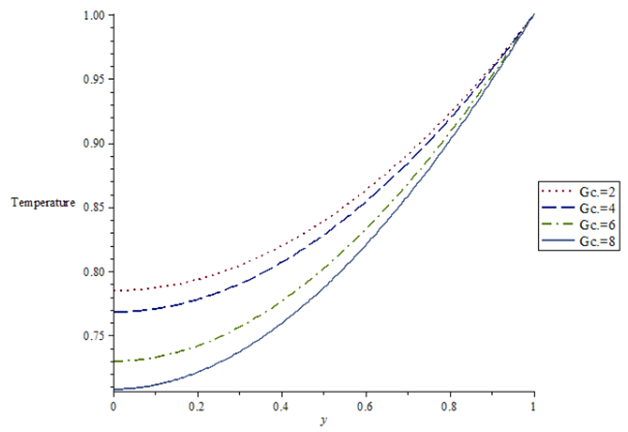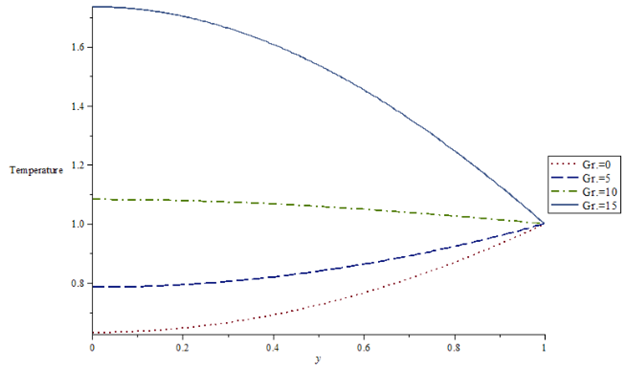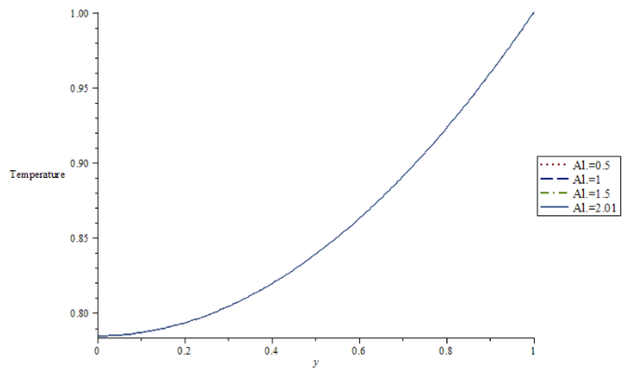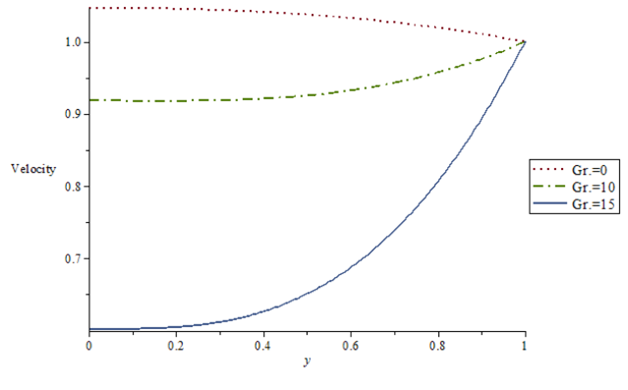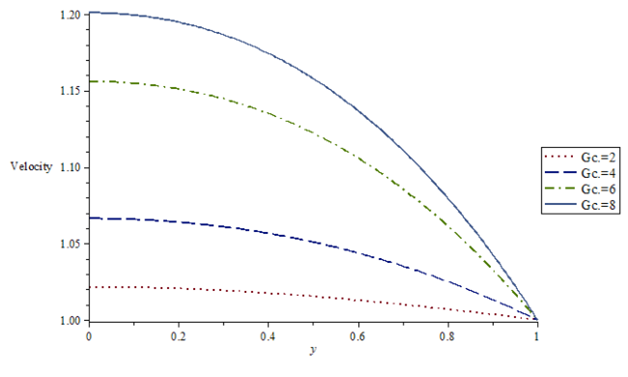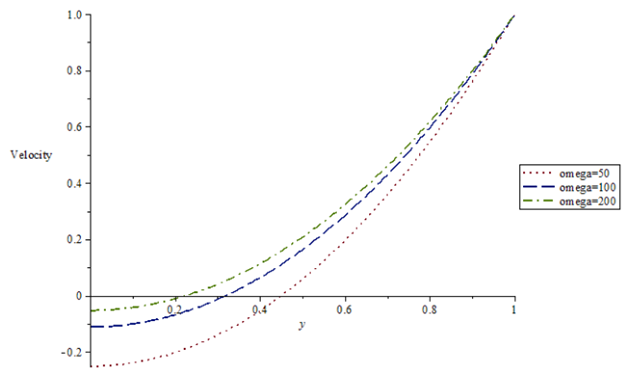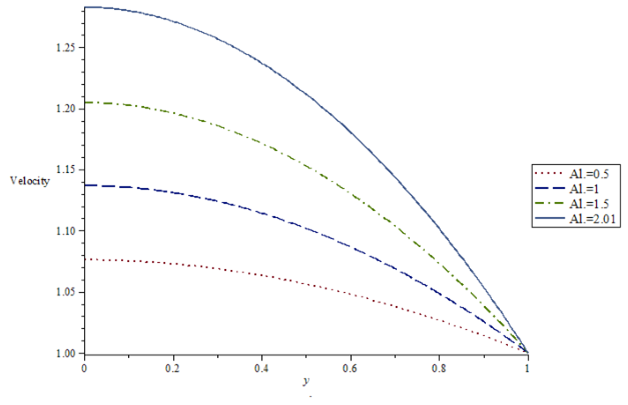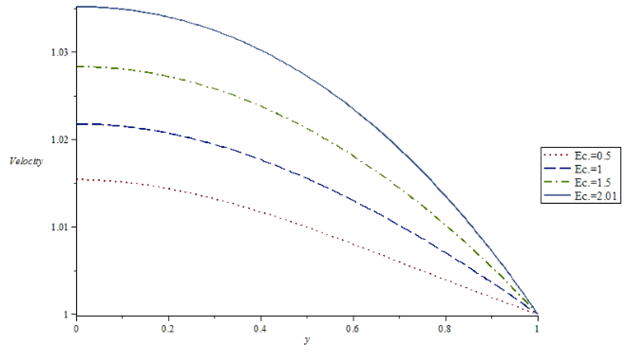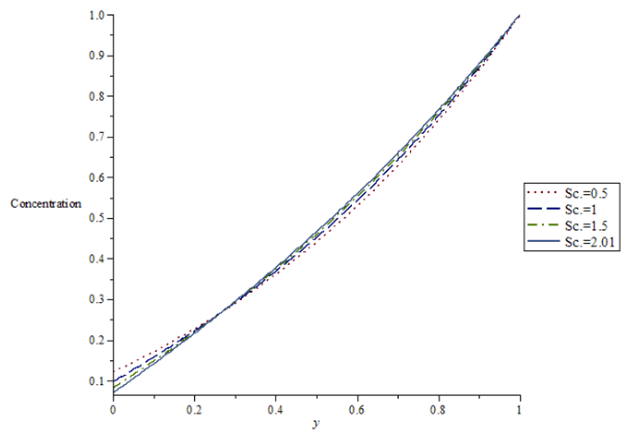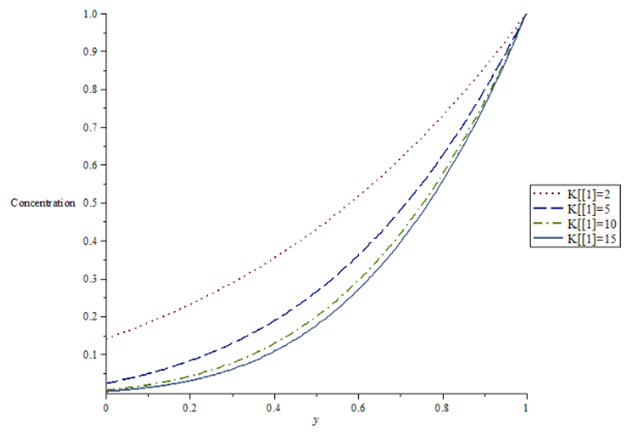The Effect of Concentration on the Radiative Flow of Unsteady Magneto hydro – Dynamics (MHD) in a Vertical Channel
- Areo, A. O
- Olajide, O. A
- Adetunde, I. A.
- -260
- Oct 10, 2023
- Engineering
The Effect of Concentration on the Radiative Flow of Unsteady Magneto hydro – Dynamics (MHD) in a Vertical Channel
Areo, A. O*1,Olajide, O. A1. & Adetunde, I. A.2
1Ladoke Akintola University of Technology, Department of Pure and Applied Mathematics, Ogbomoso, Oyo State. Nigeria.
2Prof Adetunde, I. A. Consults 8 Westmount Close M40 TN Colhyhurst Manchester. UK.
*Correspondence Author
DOI: https://doi.org/10.51244/IJRSI.2023.10923
Received: 30 August 2023; Accepted: 09 September 2023; Published: 10 October 2023
ABSTRACT
The article discusses the effect of concentration on the radiative flow of unsteady Magneto Hydro – Dynamics (MHD) in a porous vertical channel. The approach used in this article is transversely imposed magnetic field on the combination of porosity and viscosity on unsteady incompressible fluid flow and heat transfer. The resulted sets of non – linear coupled differential equation with the governing equations are solved by perturbation technique. The following parameters: Womersely Parameter (AI), Eckert Number (EC), Reynolds Number (Re), Prandlt Number (Pr), Grashof Number (Gr), Schmidt Number (Sc), Chemical Reaction Parameter (Ki) and the Mass Grashof Number (Gc) are used in investigating the nature of the flow due to velocity, temperature and concentration profile. Graphical results are presented and discussed.
Keywords: Radiative flow, Magnetohydrodynamics (MHD), Concentration, Vertical Channel, Conducting Fluid, Physical Parameter.
INTRODUCTION
Several investigations have been carried out on problems of heat transfer in an electronically conducting liquid permeated with a transverse magnetic fluid.
Several investigations have concerned themselves with steady and unsteady flows notably among them are [1 – 10]. The study of flow and heat transfer in a porous media has also received much attention in the last few decades due its ever-increasing applications in industries, and in contemporary technology. Phenomena of transport in porous media are encountered in many engineering disciplines, convective flow through porous medium have applications in the field of chemical engineering for filtration and purification processes. In petroleum technology, it is used to study the movement of natural gas, oil and water through oil channels or reservoirs. Agricultural engineering deals the movement of water and studied in the root zones in the soil. Reservoir engineering deals with the flow of oil, water and gas in petroleum reservoirs.
Hartmann and Lazarus (1937) pioneered work in the field of Magnetohydrodynamics. They both worked on the influence of a transverse uniform magnetic field on the flow of a viscous incompressible electronically conducting fluid between two infinite parallel stationary and insulating plates. Mhone and Makinde (2006), worked on unsteady MHD flow with heat transfer in a diverging channel. Sarma V. Hazarika (2010) studied the effect of variable viscosity and thermal conductivity on free convective heat and mass transfer flow with constant heat flux through a porous medium. Ahammad Mollah (2011). Looked into the numerical study of MHD free convective flow and mass transfer over a stretching sheet considering Dufour and Soret effects in the presence of magnetic field. In the same vein, by the year 2012, Qatanani and Musmar researched into the mathematics structure and analysis of an MHD flow in porous media. In 2014, Hazarika and Jadov investigated on the effects of variable viscosity and thermal conductivity on MHD free convective flow along a vertical porous plate with viscous dissipation. Malik (2016) examined the effect on physiochemical and thermal properties of Buckwheat (Fagopyrum Esculentum) starch by acid hydroskis combined with heat moisture treatment.
Most recently, Areo et al., (2021a, 2021b, 2021c) critically investigated effect of combination of porosity and viscosity on MHD flow along a vertical channel; MHD effects of porosity and concentration in an unsteady flow in a vertical channel, and on the influence of viscosity in an unsteady MHD flow in a vertical channel respectively.
The aim of this article is to present the sets of equations which result from using the physical laws of conservation of mass, momentum, and energy equations respectively. The following parameters: Womersely Parameter (AI), Eckert Number (EC), Reynolds Number (Re), Prandlt Number (Pr), Grashof Number (Gr), Schmidt Number (Sc), Chemical Reaction Parameter (Ki) and the Mass Grashof Number (Gc) are used in investigating the nature of the flow due to velocity, temperature and concentration profile. Graphical results are presented and discussed.
Mathematical Problem Formulation
The mathematical formulation equations used in this research work were governed by Continuity equation, Momentum equation. Energy equation and Concentration equation .With the use of these governing equations which resulted thus:
where a0the characteristics constant half width of the channel, L is the characteristics
constant length of the channel and S is the function describing the channel wall divergence geometry. This assumption helps us to simplify the problem by writing the equations in non-dimensional form. To achieve this,T0 is defined as the reference temperature and the following non-dimensional qualities were introduced.
Differentiating (24) with respect to x, y and t the non-dimensional quantities and Substituting into (15, 17, 18, 19) and after neglecting terms of order and higher order as well as the primes for charity to obtain
Due to the nonlinear nature of the equations, it is convenient to adopt a power series expansion with the effective flow Reynolds number (Re) as follows:


We now solving the following equations: (34), (35), (36), (37), (38), (39), (40), (41), (42), (43), (44), (45), (46) (47), (48), (49), (50) and (51) and the stream functionψ, vorticityω, temperature distribution θ and volume fraction∅ were obtain thus


(93)


(106)
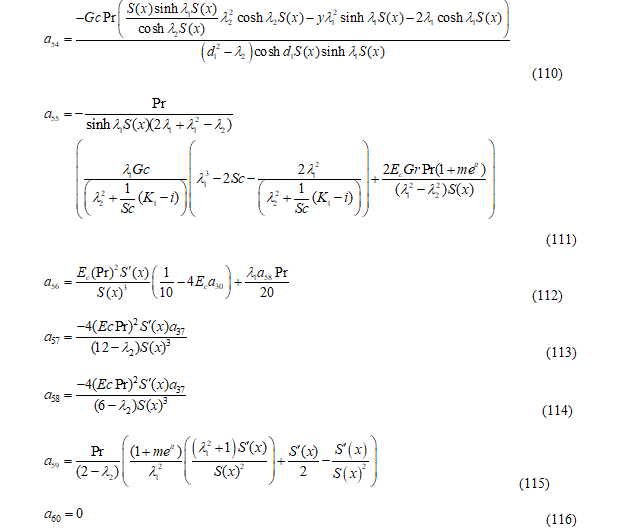



DISCUSSION OF RESULTS
In order to study the behavior of velocity, temperature and concentration profile, a comprehensive numerical computation using mathematical software Maple 12 software was carried out for various values of the parameters that describe the flow characteristics. The numerical calculations have been performed for the “exponentially” diverging geometry i.e.,S(x)=Ex where x is slowly varying. We choose the pulse m small so that the ensuing flow is a small oscillatory disturbance about the steady flow. We have observed that for every m, the Womersley parameter a can be varied only for a range of values, hence we set a=0.5. The effect of varying the Reynolds number Re, the Eckert number Ec and the Prandtl number Pr to flow structure is well known in the literature and is not investigated in this work. Therefore, we set Re=0.1, Ec=1 and Pr =7.1 in the ensuing analysis; we assume that m and Ω can be varied while keeping a, Re, Ec and Pr fixed. This assumption is valid because of the physics of the problem and the range of value of m and Ω and the that are involved. The results were reported in terms of graphs as shown in figures (1)- (3)
The temperature profile indicates decrease in temperature towards the wall of the pipe but generally increases with decreasing Prandlt number (figure 1a). Temperature decreases towards the wall of the pipe with increase in the Reynolds numbers. At higher values of Reynolds numbers the increase is well pronounced (figure 1b). Temperature is constant when the Eckert numbers is 0.5 and decreases with increase in Eckert numbers (figure 1c). In figure 1d temperature decreases with increase in mass Grashof number from the middle of the pipe towards the wall This is depicted in figure 1e as temperature increases with increase in thermal Grashof numbers also the increment is geometric. Womersley numbers has no effect on temperature profile as the values overlapped on the line regardless of the differences in womersley numbers. The temperature profile decreases from the wall of the pipe and converge at 1 as the values of magnetic field intensity is increased (figure lg).
The velocity profile indicates decrease in velocity profile towards the middle of the pipe but generally decrease with increasing thermal Grashof numbers. The decrease is geometric at the middle of the pipe (2a). This is depicted in figure 2b as there is increase in velocity profile with increase in mass Grashof numbers. The increment is proportional. With increase in magnetic field intensity parameters there is increase in the velocity profile but the increment is in the reverse direction at the middle of the pipe (1c). Womersley numbers also exhibited increment in velocity profile and the increment is well pronounced at the middle of the pipe than at the wall. For Reynolds numbers constant at Re = 0.1, slightly decreased at Re = 0.6 and decreased greatly with Re = 0.6 (.2e). The velocity profile increased with Increasing Eckert numbers and the increment is proportional (figure .2f)
The concentration profile decreases slightly at the middle of the pipe got stagnant at y=0.3, later increase slightly towards the wall and got converged at y=1 as the Schmidt numbers increases (figure .3a). For Chemical reaction parameters, the concentration profile decreases. The increment is more at the middle of the pipe than towards the wall where it got converged (figure 3b).
CONCLUSION
A model was formulated with the inclusion of concentration equation. The study added mass Grashof and thermal Grashof parameter to explain viscous dissipation in a porous vertical channel. Approximate numerical solutions were found using regular perturbation technique together with their boundary condition. The outcome of study showed that increase in viscous dissipation led to decrease in Temperature and velocity profile but not in concentration. The mass Grashof and thermal Grashof parameter effects on heat and mass transfer were clearly exposed with the significance of other parameters introduced.
Overall observations based on the problem formulated and analyzed upon which conclusions were drawn and listed as:
- evaluated the effect of mass Grashof and thermal Grashof parameter on heat and mass transfer of natural convection fluid flow in porous media.
- assessed the impacts of mass Grashof and thermal Grashof parameter on heat and mass transfer of MHD fluid flow in porous media.
- established the influence of MHD fluid flow on vertically porous channel; and
- determined the effects of mass Grashof and thermal Grashof parameter on heat and mass transfer of MHD fluid flow in a vertically porous channel. Limitation exhibited by the methods used was that: the mass Grashof and thermal Grashof parameter effect on heat and mass transfer over a vertical porous channel was considered. The resulting governing equations were simplified and solved using perturbation technique. The results are presented in graphical forms.
The impact of variations of velocity, temperature and concentration parameters on non-dimensional variables of the heat and mass transfer was established to explain mass Grashof and thermal Grashof parameter on heat and mass transfer of MHD fluid flow in porous vertical channel. The influence of mass Grashof and thermal Grashof parameter effects were also noticed along with other listed parameters, and these contributed chronologically to MHD fluid flow thereby explaining heat and mass transfer over porous vertical channel.
The study concluded that increase in mass Grashof, thermal Grashof, magnetic parameter; Womersley parameters, Reynolds, Eckert, Schmidt and chemical reaction numbers had significant effects on the MHD fluid flow in porous vertical channel.
Figure 1a: Temperature profile for different values of Prandlt numbers
Figure 1b: Temperature profile for different values of Reynolds numbers
Figure 1c: Temperature profile for different values of Eckert numbers
Figure 1d: Temperature profile for different values of mass Grashof numbers
Figure 1e: Temperature profile for different values of thermal Grashof numbers
Figure 1f: Temperature profile for different values of Womersley numbers
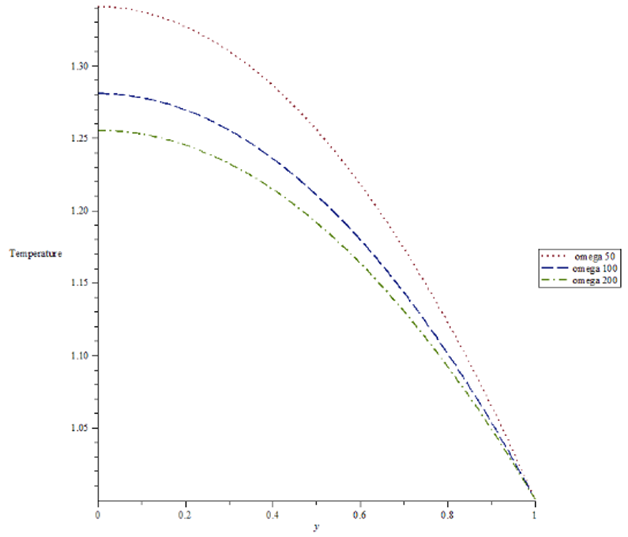
Figure 1g: Temperature profile for different values of magnetic field intensity parameters
Figure 2a: velocity profile for different values of Grashof numbers
Figure 2b: Velocity profile for different values of mass Grashof numbers
Figure 2c: Velocity profile for different values of magnetic field intensity parameters (Omega)
Figure 2d: Velocity profile for different values of Womersley numbers
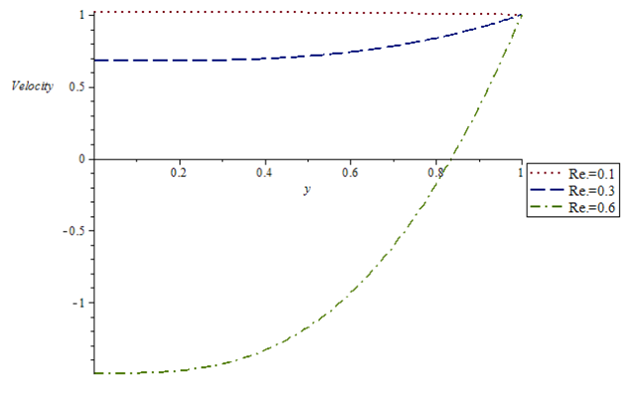
Figure 2e: Velocity profile for different values of Reynolds number
Figure 2f: Velocity profile for different values of Eckert numbers
Figure: 3a: Concentration profile for different values of Schmidt numbers
Figure 3b: Concentration profile for different values of chemical reaction parameters
ACKNOWLEDGMENTS
This article was written to honour and dedicated to Late Prof Mrs. Akinpelu. F.O. whose sudden death was a shock to majority of us; We pray that may her soul rest in perfect peace and God take care of all that she left behind and be with everyone of us that are left behind.
REFERENCES
- Hartmann, J and Lazarus, F (1937): Kgl, Danske Videnskab Selskab Fat – Tys Medd 15(5, 6).
- Adetunde, I. A. (1995): On the influence of radiation on two phase magnetohydrodynamics in aa vertical channel. MSc. Dissertation, University of Ilorin. Unpublished.
- Mhone, P. Y and Makinde, O. D (2006): Unsteady MHD flow with heat transfer in a diverging channel, Rom. Journal of Physics Vol 51, No 9 – 10, Pages 967 – 979. Bucharest.
- Nield, D. A and Bejan, A.(2006): Convection in Porous Media 3rd Edition. Springer Verlag, New York
- Sarma U, and Hazarika, G. C (2010): Effects of variable viscosity and thermal conductivity on free convective heat and mass transfer flow with constant heat flux through a porous medium. Journal of Com. Math. Sci. Vol.1(2). Pages 163 – 170.
- Ahammad, M.U. Mollah Md. S. H. (2011): Numerical study of MHD free convective flow and mass transfer over a stretching sheet considering Dufour and Soret effects in the presence of magnetic field. International Journal of Engineering and Technology Vol. 11(05) Pages 4 – 5.
- Qatanani, N and Musmar, M. (2012): The mathematics structure and analysis of an MHD flow in porous media. International Journal of Mathematical Engineering and Science Vol. 1(2) Pages 2277 – 2282.
- Hazarika, G. C. and Jadov, Konch (2014): Effects of variable viscosity and thermal conductivity on MHD free convective flow along a vertical porous plate with viscous dissipation. International Journal of Mathematics Trends and Technology Vol. 15(1)
- Malik (2016) examined the effect of on physiochemical and thermal properties of Buckwheat (Fagopyrum Esculentum) starch by acid hydroskis combined with heat moisture treatment. Journal of Food Processing and Preservation, Vol. 40 Pages 1352 – 1363. Magnetic Field Intensity Parameter (Omega).
- Areo, A. O., Akinpelu. F. O. and Adetunde, I. A. (2021): On the influence of viscosity in an unsteady MHD flow in a vertical channel. Journal of Scientific and Engineering Research Vol.8 (9) 176 – 198.
- Areo, A. O., Akinpelu. F. O. and Adetunde, I. A. (2021): MHD effects on porosity and concentration in an unsteady flow in a vertical channel. Journal of Mechanics Vol.10 (2) 30 – 50.
- Areo, A. O., Olajide. O. A. and Adetunde, I. A. (2021): Effects of combination of porosity and viscosity on MHD flow along a vertical channel. European Journal of Advance Engineering Technology. Accepted and In print.
































